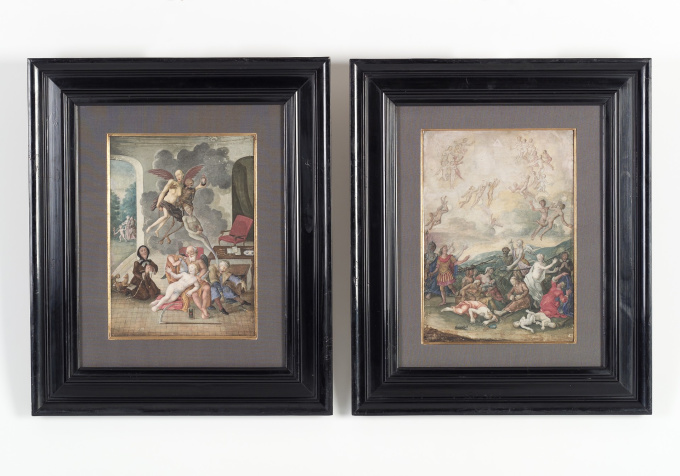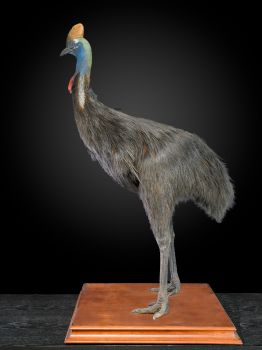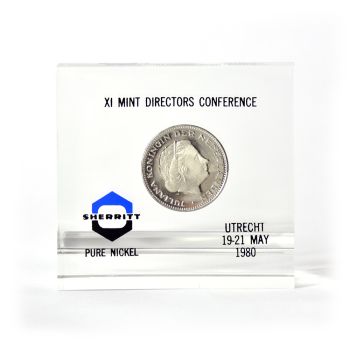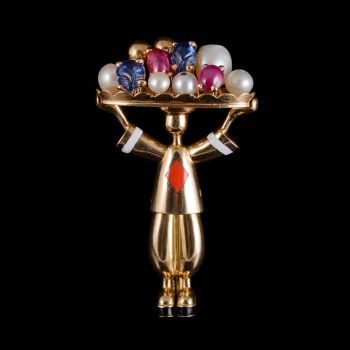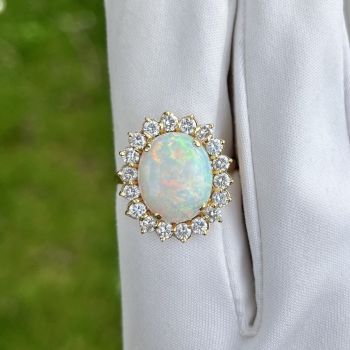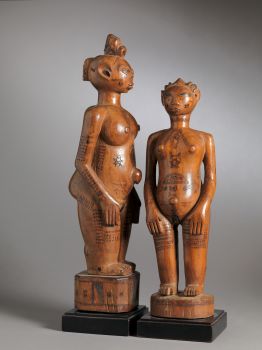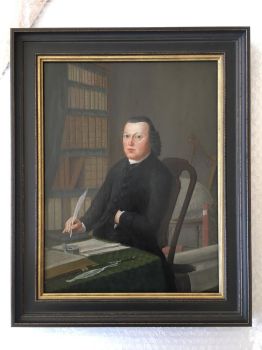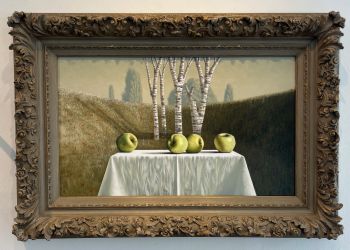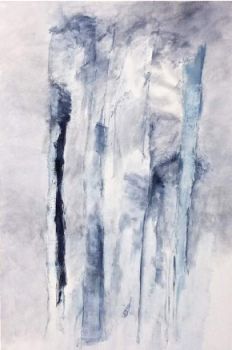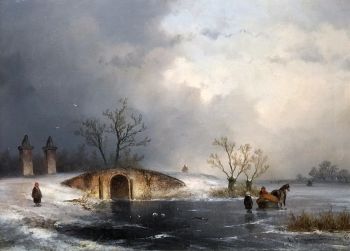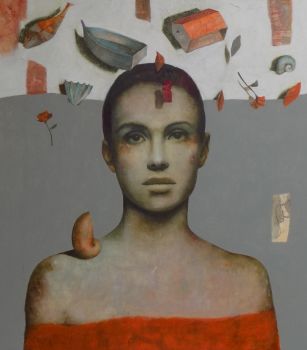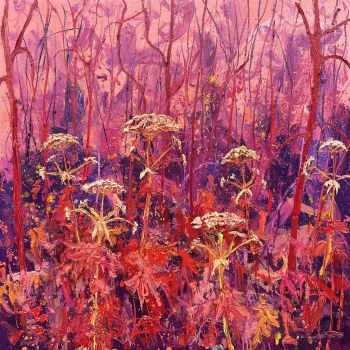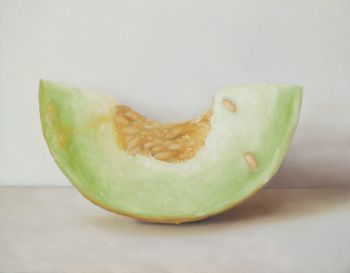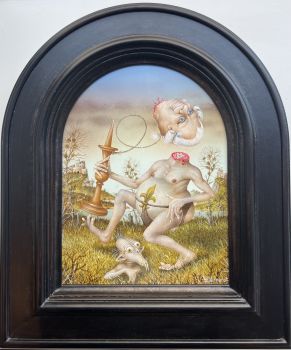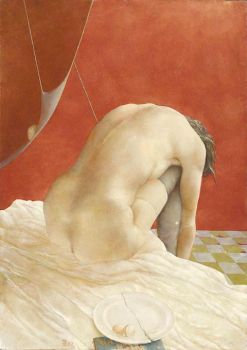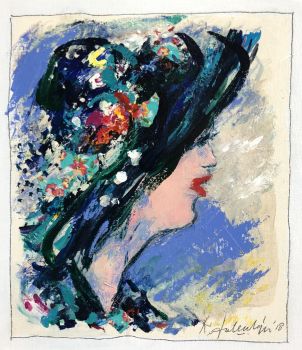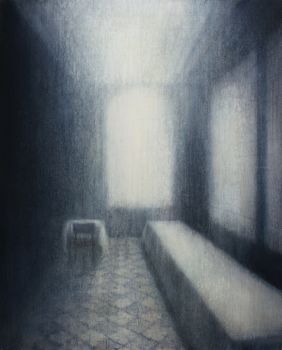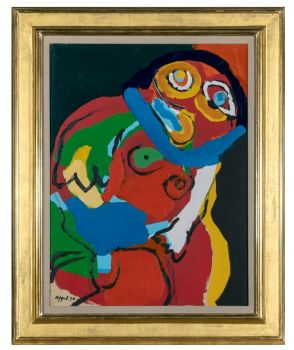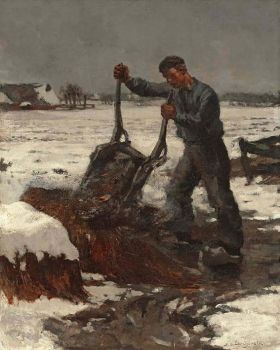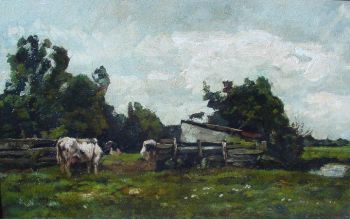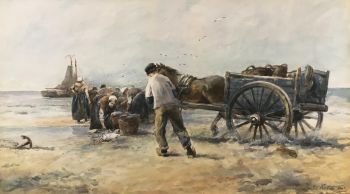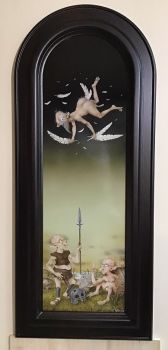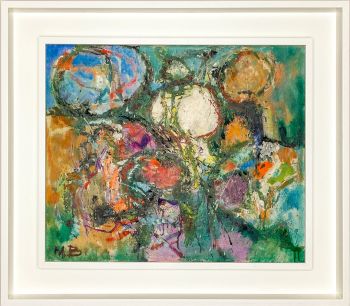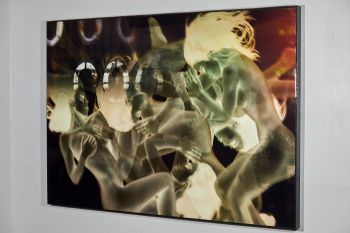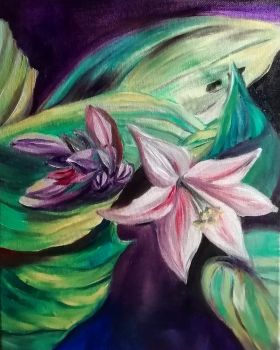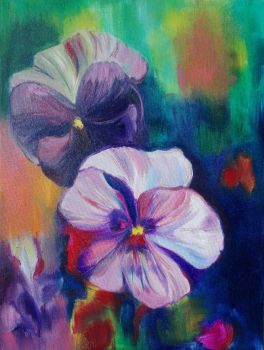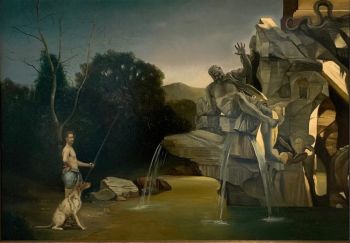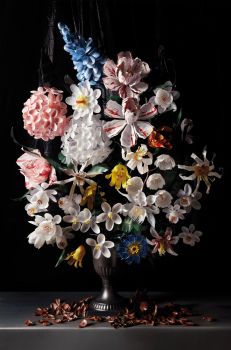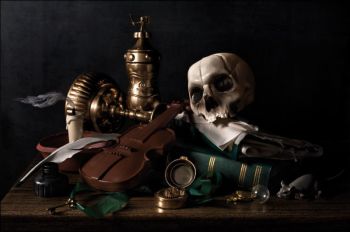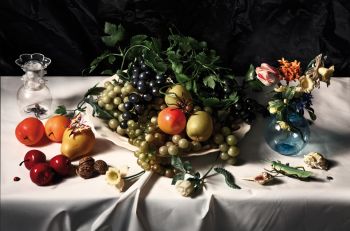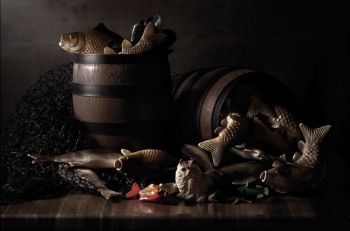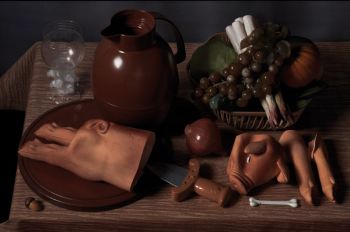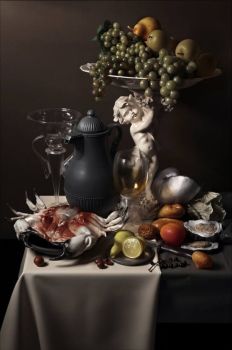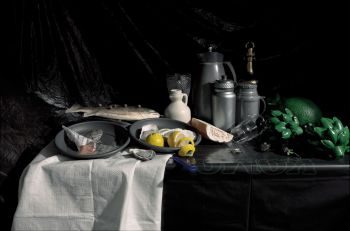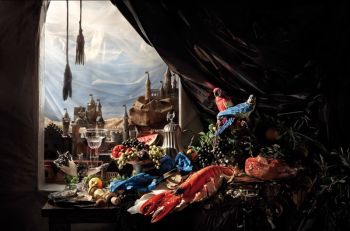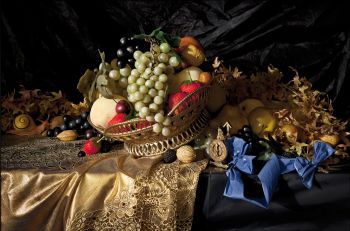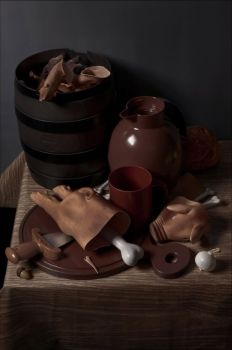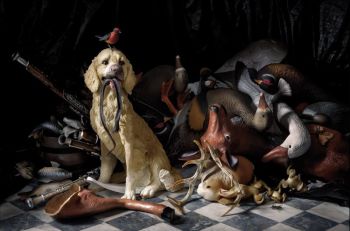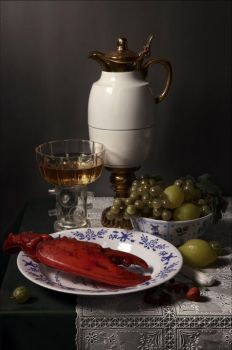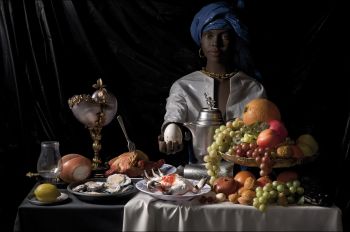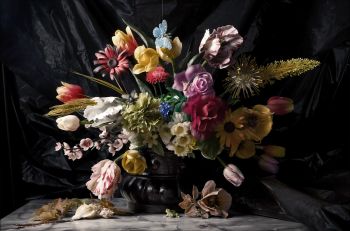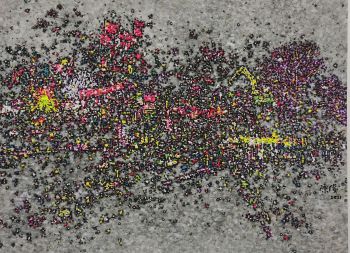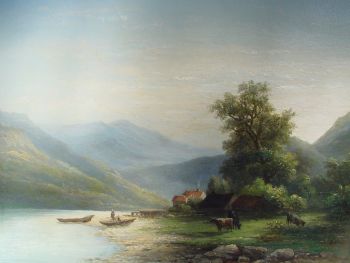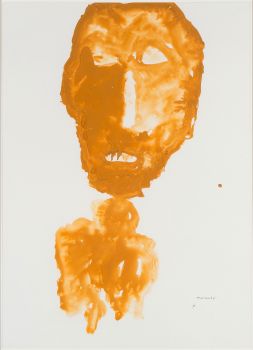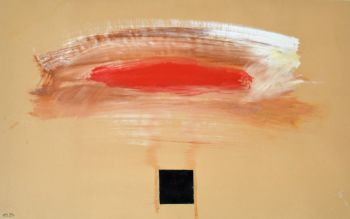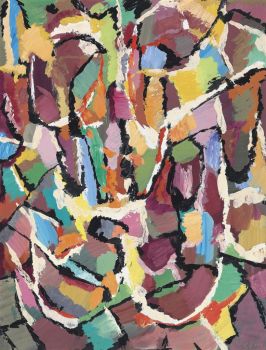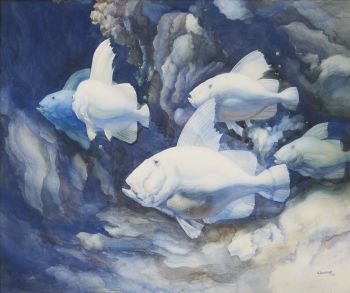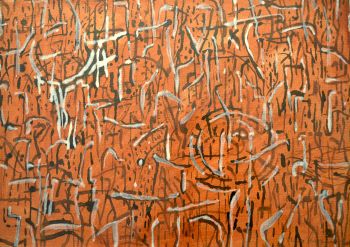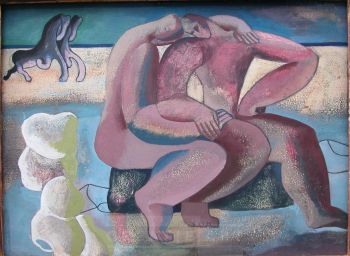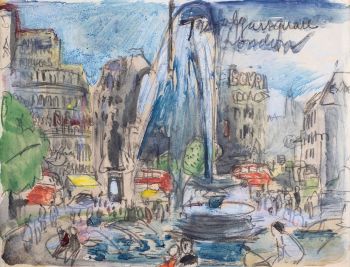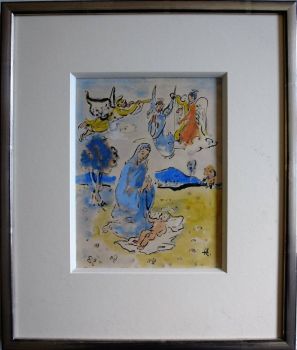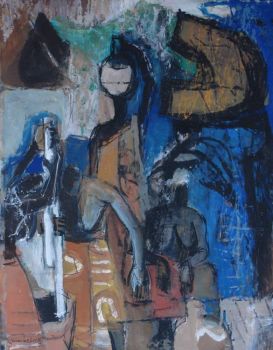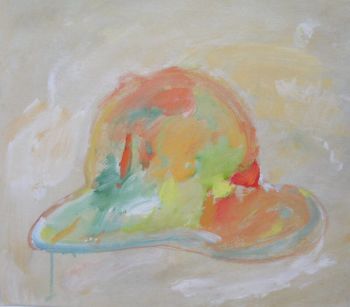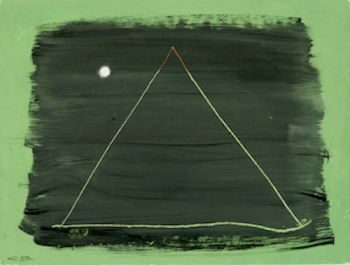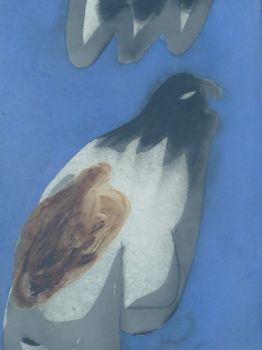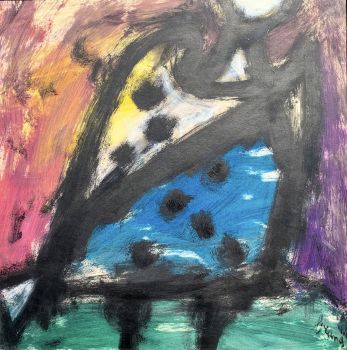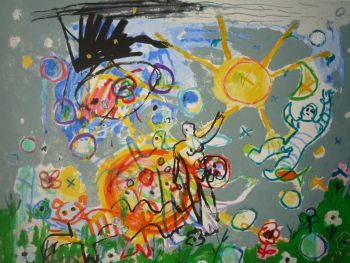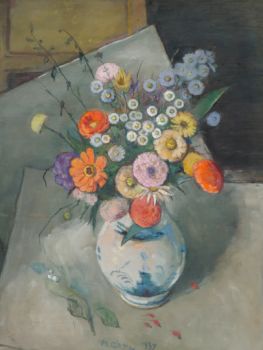Duas pinturas alemãs a guache 1720 - 1730
Artista Desconhecido
GuachePapelAquarelaPintar
50 ⨯ 42 cm
Atualmente indisponível via Gallerease
- Sobre arteTwo pictures with a rare Vanitas scene.
Father Time accompanied by Death.
In a chair in the foreground sits a winged Father Time clipping th wings of Life. In front of Time we see an hourglass and a scythe. These are both attributes of Time as is the pair of scissors with which the wings of life are pinioned.
On Time’s right hand we see a man leaned to a stool with a bandage round his head whom’s spirit is escaping through his mouth. Death is literally dragging of the spirit by its hair. Between the legs of the man we see an opened moneybag. On the left of Father Time a kneeling and lamenting woman accompanied by a monkey and a dog that reads a book.
Hovering over this scene we see Death that drags of an old woman with a pearl necklace and a portrait medallion, together with te soul of the dying man.
On the right a table with an inkwell, papers and a written text. On the left in the landscape outside a pair accompanied by a winged boy with a torch.
This unusual representation was almost certainly meant to commemorate the human mortality. Father Time with his many attributes and the grinning Death speak for themselves. The dog usually stands for faithfulness and the monkey for lasciviousness. Here it is can reasonably be assumed that the stand for the human arrogations of foolishness and vanity because they are depicted as impersonations of human beings. The text on the table might refer to the account of the deceased’s life.
The Trapnet of Death
This representiation is undoubtedly an allusion of the Last Judgement, although the separation of souls is depicted in a unique style.
Death, with his head and scythe decorated with flowers, seduces people to stay on his side of the trapnet. Behind him stands a winged figure that beckons the people towards the light.
Before the net in the foreground we see money pouches, gems and a man wearing a crown, all symbols of power and the richess of the world. Possibly the flowers that Death is adorned with refer to the transience of life and swift decay.
The absence of explicitly Christian symbols is striking in both the representations. Only the winged person in the second picture could be conceived as an angel. Traditionally however, it is God himself who in depictions of the Final Judgement seperates the sheep from the goats, surrounded by the Archangels and Apostles. Here we see none of these symbolizations.
Gouache: a technique with water soluble paint and gum arabic. The difference with watercolor is that the result is heavier and much more opaque . - Sobre artista
Pode acontecer que um artista ou criador seja desconhecido.
Algumas obras não devem ser determinadas por quem são feitas ou são feitas por (um grupo de) artesãos. Exemplos são estátuas dos tempos antigos, móveis, espelhos ou assinaturas que não são claras ou legíveis, mas também algumas obras não são assinadas.
Além disso, você pode encontrar a seguinte descrição:
•"Atribuído a …." Na opinião deles, provavelmente uma obra do artista, pelo menos em parte
• “Estúdio de…” ou “Oficina de” Em sua opinião um trabalho executado no estúdio ou oficina do artista, possivelmente sob sua supervisão
• "Círculo de ..." Na opinião deles, uma obra da época do artista mostrando sua influência, intimamente associada ao artista, mas não necessariamente seu aluno
•“Estilo de…” ou “Seguidor de…” Na opinião deles, um trabalho executado no estilo do artista, mas não necessariamente por um aluno; pode ser contemporâneo ou quase contemporâneo
• "Maneira de ..." Na opinião deles, uma obra no estilo do artista, mas de data posterior
•"Depois …." Na opinião deles uma cópia (de qualquer data) de uma obra do artista
• “Assinado…”, “Datado…” ou “Inscrito” Na opinião deles, a obra foi assinada/datada/inscrita pelo artista. A adição de um ponto de interrogação indica um elemento de dúvida
• "Com assinatura ….”, “Com data ….”, “Com inscrição ….” ou “Tem assinatura/data/inscrição” na opinião deles a assinatura/data/inscrição foi adicionada por outra pessoa que não o artista
Related artworks
Artista Desconhecido
Conjunto de oito desenhos a guache1799 - 1801
Preço em pedidoRobert Schreuder Antiquair
1 - 4 / 12Dutch School
Chegada de um índio oriental holandês na Baía da Mesa18th century
Preço em pedidoZebregs & Röell - Fine Art - Antiques
1 - 4 / 24Corstiaan Hendrikus de Swart
Mountain landscape with Lake1838 - 1900
Preço em pedidoKunsthandel Pygmalion
1 - 4 / 24- 1 - 4 / 24

